Rare Rides Personas: Powel Crosley Junior, Tiny Cars, Radio, and Baseball (Part IV)

Powel Crosley Jr. entered a new and much more successful chapter of his life in 1916 when he founded the American Automobile Accessories Company (Americo) alongside Cooper Tire Company founder Ira J. Cooper. One of the earliest large-scale retailers of aftermarket car parts, Americo was a pioneer. The company sold parts made by other firms and manufactured its own parts. Many of the latter were invented by Crosley himself.
After just two years Crosley bought out Cooper’s share of the business and pulled in his younger brother Lewis as a new business partner. Despite not having an eye for the financial part of business, Powel was great at sales, advertising, and anticipating what the consumer wanted and needed most. And what they needed circa 1920 were home radios.
Americo had already expanded into phonograph manufacturing: Crosley developed a phonograph of equal quality to the big names like RCA and Edison and sold it at half the price. The Amerinola phonograph was made by a new company division, Amerinola Co. And after Crosley saw how expensive the newly popular home radio was, he decided Amerinola could make one of those too.
With a pamphlet about radios in hand and ideas of affordability in his head, Crosley went home and drafted up a radio design. He built his first radio with his son, who’d asked for a radio in the first place and generated the venture. The radio was as simple as possible and of the “crystal” variety.
A crystal radio receiver used the power of the radio signal it received to produce sound and required no external power and no battery. What a green device! The radio was named after its internal crystal detector. The detector was a piece of crystal mineral that extracted the audio from the radio wave. Often, the crystal was made of lead sulfide.
The crystal radio required only a few parts, and all of them were cheap: An exterior case, some wire, an antenna, the crystal, a capacitor, and some headphones. As it was an unpowered passive device, headphones were required to hear the rather low-volume sound the radio produced.
Once the radio prototype was built Crosley realized just how cheap they’d be to make, and how he could sell them for much less than $130 ($2,226 adj.) electronic radios. He paid a couple of local University of Cincinnati students to rework the design into something he could build on a mass scale. It didn’t take long for the radio to be production ready.
Crosley named his new radio the Harko and put it on sale in 1921, a year after the Amerinola. Its sale price was just $7 ($116 adj.), much less than any other commercially available radio. That meant radio was suddenly available to a much broader spectrum of consumers. Sometimes sold as the Harko Radio Receiver, it came with a wooden case and included a tuning knob and four exterior posts.
Unsurprisingly, the radio was immediately successful. Almost immediately another division of Americo was established, the Crosley Radio Corporation. The company manufactured a line of inexpensive radios, as well as components for other radio manufacturers. As the money poured in, Crosley investigated a newfound interest in the prospect of another emerging industry, radio broadcasting.
With all his advertising experience, he realized if he generated excitement for radios via broadcasting, more consumers would buy radio sets. Shortly after the Harko went on sale, Crosley began broadcasts from his home in Cincinnati. With his callsign 8CR, he used a 20-watt transmitter for his earliest broadcasts.
Before long Crosley was ready to go commercial with his broadcasting. He launched a new commercial entity on March 22, 1922: Crosley Broadcasting Corporation (1922-1977). The company got a commercial license to operate a new radio station, WLW (1922-), at 50 watts. WLW-AM Cincinnati found an audience quickly, much like the Harko radio. Before long WLW was incredibly popular and had regularly scheduled programming.
The radio manufacturing side of the house needed to expand, so in 1924 Crosley Radio Corporation relocated to a larger facility near downtown Cincinnati. A year later, the company officially became the largest radio manufacturer in the country. A slogan arrived alongside the company’s new status, “You’re There With a Crosley.”
Meanwhile, Crosley had an important new radio in development. Affordable like the Harko, it had a key difference: It was an electrically-powered set. Another simple radio, the new Crosley Pup used one tube and had a regenerative receiver design. It went on sale in 1925.
The regenerative radio had increased sensitivity and amplification over a crystal design. Its single tube was used for both amplification and detection. It also had a coil called a “tickler” that required a manual adjustment to send part of the amplified signal back to the tuner. The resulting positive feedback loop amplified the signal further.
There was a very simple reason Crosley decided to call the new radio “Pup,” and it had to do with Victor, a radio division of RCA. Victor used Nipper the dog as its trademark for the Victor Talking Machine. Nipper the dog appeared in the famous 1989 painting His Master’s Voice, by Francis Barraud. The dog is synonymous with RCA even today.
Crosley needed a way to use a dog in his marketing. It needed to be similar enough to Nipper to inspire confidence, but different enough to distinguish the Pup. So he used a different British dog character named Bonzo. Bonzo was a cartoon dog that appeared in famous sketches and comic strips by George Studdy, who created the character in 1912.
For Crosley purposes, a terrier version of Bonzo appeared wearing headphones and listening to a Pup radio. The Bonzo advertising was more modern and up-to-date than Victor’s dog and phonograph and was part of why the Pup became an instant success. Bonzo was even turned into a ceramic 9-inch by 8-inch figurine for store displays.
Customers came to various radio stores and expressed an interest in purchasing the display. While that was not permitted, Crosley manufactured smaller versions made of a chalk material and sold them to customers for $1 ($17 adj). Additionally, Crosley appeared in ads with the ceramic Bonzo, where he tuned the radio for man’s best friend.
The Pup radio’s success wasn’t only due to clever marketing, but down to its asking price: $9.75 ($165 adj.). The new Crosley option was still much cheaper than other commercial radios. But the Pup wasn’t all sunshine and rainbows for Crosley, who saw an issue with the expansion of radio: There wasn’t enough programming.
Crosley would have to address the sparse and localized nature of radio if he wanted to make the most of his company’s potential. At the time, typical radio stations had a range of 50 miles or less from their broadcast tower. The solution was to add more power to his WLW station - much more. We’ll pick up there next time, in 1928.
[Images: Victor/RCA, Crosley]
Become a TTAC insider. Get the latest news, features, TTAC takes, and everything else that gets to the truth about cars first by subscribing to our newsletter.

Interested in lots of cars and their various historical contexts. Started writing articles for TTAC in late 2016, when my first posts were QOTDs. From there I started a few new series like Rare Rides, Buy/Drive/Burn, Abandoned History, and most recently Rare Rides Icons. Operating from a home base in Cincinnati, Ohio, a relative auto journalist dead zone. Many of my articles are prompted by something I'll see on social media that sparks my interest and causes me to research. Finding articles and information from the early days of the internet and beyond that covers the little details lost to time: trim packages, color and wheel choices, interior fabrics. Beyond those, I'm fascinated by automotive industry experiments, both failures and successes. Lately I've taken an interest in AI, and generating "what if" type images for car models long dead. Reincarnating a modern Toyota Paseo, Lincoln Mark IX, or Isuzu Trooper through a text prompt is fun. Fun to post them on Twitter too, and watch people overreact. To that end, the social media I use most is Twitter, @CoreyLewis86. I also contribute pieces for Forbes Wheels and Forbes Home.
More by Corey Lewis
Latest Car Reviews
Read moreLatest Product Reviews
Read moreRecent Comments
- Buickman forget 5G, WiFi, microwaves, smart meters, and Bluetooth. (fluoride, chemtrails, clot shots)what does riding on a giant battery with ultra magnetic frequency do to your innards?oh, so an EV works for you not venturing far? YOU'RE NOT USING GAS!THERE'S NO FOOD IN THE DESERT!
- Buickman Who Killed the Electric Car?the buying public, that's who.
- MaintenanceCosts This is refreshing. Excess car storage which brainless local zoning rules forced the builders of this mall to include, but which normally sits empty, is actually being used for car storage!
- MaintenanceCosts Nice car if you can get it properly sorted, but the level of safety tech doesn't seem quite enough for a young driver on today's brodozer-infested highways.
- VoGhost OK. But if Subaru really wants this to sell, they'd make it as a PHEV with enough American content to get buyers $7,500 back on their federal taxes. Otherwise, this really doesn't stand out in a world of RAV4s and CR-Vs.






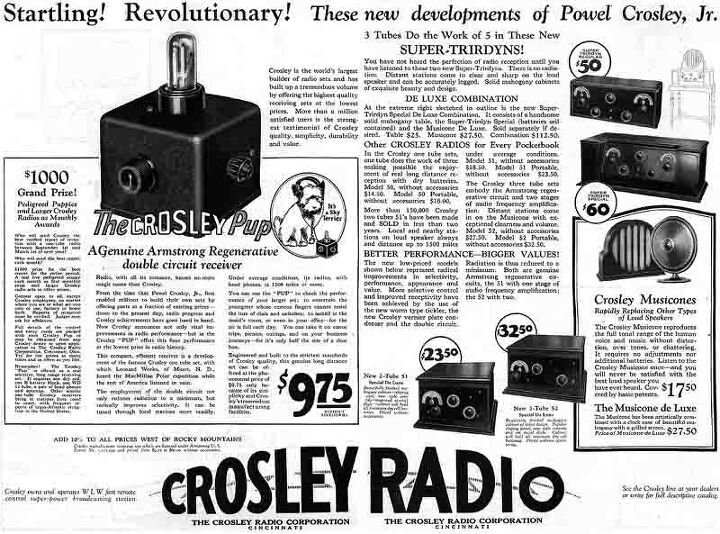

















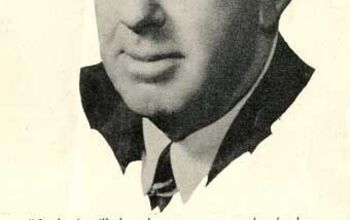
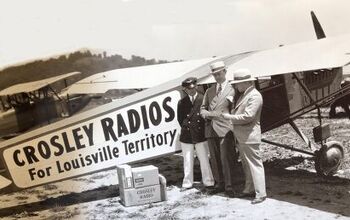
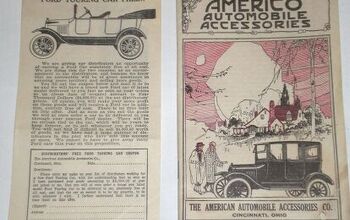
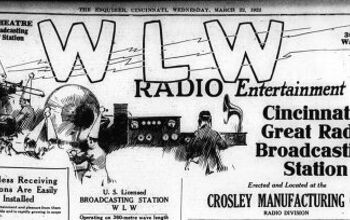










Comments
Join the conversation
Beginner level: https://steampunk.wonderhowto.com/how-to/complete-guide-build-crystal-radio-plus-they-work-0141117/
More advanced: https://youtu.be/_ID4qYysXyI
Hey Kids! Ask your parents to point out a metal cold-water supply pipe to use as a ground. When they send you to the crawlspace because your nice new home uses PEX, ask them if they always had such poor judgment, or is it a recent development.*
*Take a good look at your mom, and then at your dad, and then stroll out to the driveway to evaluate your parents' choice of vehicles. (Now plot your escape.)
When growing up, I had a crystal set radio in the basement. As it needed no outside source of power, this radio was there to receive information during power outages from storms and in case "the Big One" got dropped on Wright-Patterson AFB.